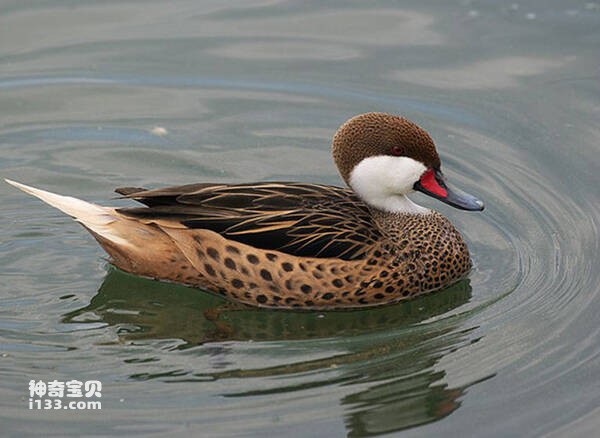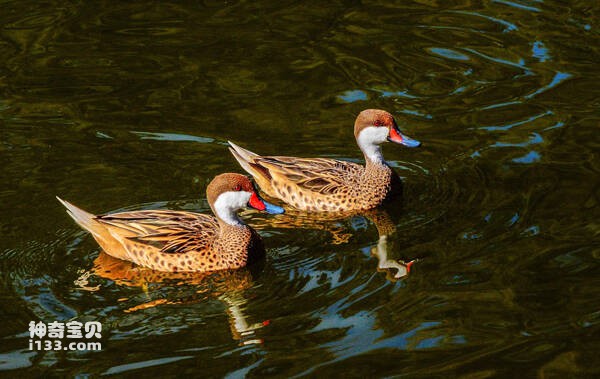Anas bahamensis
IUCN
LCBasic Information
Scientific classification
- name:Anas bahamensis
- Scientific Name:Anas bahamensis,White-cheeked Pintail
- Outline:Waterfowl
- Family:
Vital signs
- length:38-51cm
- Weight:474-533g
- lifetime:About 14 years
Feature
It has a dark brown cap and nape, white cheeks and throat, and an iron-gray beak
Distribution and Habitat
Located in Anguilla, Antigua and Barbuda, Argentina, Aruba, Bahamas, Barbados, Bolivia Plurinational State, Bonaire, Saint Eustatius and Saba, Brazil, Cayman Islands, Chile, Colombia, Cuba, Curacao, Dominica, Dominican Republic, Ecuador, French Guiana, Guyana, Haiti, Martinique, Montserrat, Paraguay, Peru, Puerto Rico, Saint Kitts and Nevis, Saint Lucia, Saint Vincent and the Grenadines, Saint Martin (Netherlands) Parts), Suriname, Trinidad and Tobago, Turks and Caicos Islands, United States, Uruguay, Venezuela, Virgin Islands.
Travelers: Malvinas Islands, Guadeloupe, Jamaica, Panama, Saint Martin (French).
It inhabits the mangrove wetland and the lagoon. During the wintering period, it lives in various types of rivers, lakes, swamps, saline-alkali wetlands, ponds, open coastal zones and bays. During the breeding period, it mainly inhabits large inland lakes, slow-moving rivers, river bays and nearby swamps and wet grasslands.
Appearance
The white-faced pintail has a body length of 38-51 cm, a wingspan of 55-68 cm and a weight of 474-533 grams. It has a dark brown cap and nape, white cheeks and throat, and an iron-gray beak with bright red triangular spots on both sides of the black beak base at the corners of the mouth. The wingfeathers are mostly black with brown edges. The body is brown-gray with dark brown spots. Dark brown feathers with bright green wing mirrors; The leading edge of the wing mirror is the cinnamon tip of the large cover feathers, and the tail feathers are white and pointed. The female's plumage is dull, less contrasting, and slightly smaller. The irises are dark brown and the feet and legs are grey.
Details
The White-cheeked Pintail duck (Anas bahamensis) has three subspecies and is a medium-sized swimming bird of the genus Anatidae.

White-faced pintail ducks like to live in groups and often move around in groups, especially during migration season and winter. Often in large groups of dozens to hundreds of individuals. Activities and rest mostly near the shore waters or open beaches and mud. Swimming light and agile, but also good at flying; Flying is fast and powerful. Walking on land is fine. Timid and alert; During the day, most of them hide in the reeds with water or wander or rest on the water surface away from the shore, and only at dusk and night go to the shallow water to feed, a little movement, immediately fly away.
White-faced pintail ducks are good at diving, getting food underwater, eating plants as their staple food, and sometimes eating animal foods. Ducks have webbed toes, good at swimming and splashing in the water, swimming tail out of the water, good at foraging in the water, splashing and mating. Splashing in water is beneficial to the cleanliness and growth of feathers.

The white-faced pintail is sexually mature at one age and can breed and nest. The pair formation process is fairly rapid, with most females bonding before the winter is over, and a few courtship behaviors lasting until the following spring migration. Breeding season from April to July. The nest is built on grass or low ground covered with sparse vegetation near a lake or river bank, usually 50 to 100 meters away from the water. Each clutch lays 5-12 eggs. Usually one litter a year. The eggs are milky white to pale yellow in color, 52-58×37-39 mm in size, and weigh 40-51 grams. Brooding is done entirely by the female, with the male usually only guarding the nest at the beginning of the incubation period. Incubation period is 21-23 days. Chicks early sex, soon after hatching can walk and swim, ducklings can dive into the water to escape the enemy, and sometimes with different nests of ducklings can be connected together to form a larger group. Feathers take 45 to 60 days to mature. It can live up to 14 years.
Listed on the International Union for Conservation of Nature (IUCN) 2013 Red List of Threatened Species ver 3.1 - Low Risk (LC).
Protect wild animals and eliminate wild meat.
Maintaining ecological balance is everyone's responsibility!








